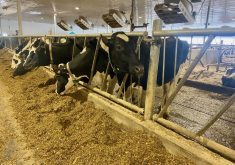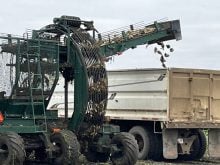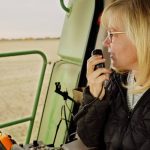BRUNO, Sask. – The Saskatchewan Women’s Institute closed its office at the University of Saskatchewan on May 30 and laid off its part-time secretary.
However, the group vows to carry on, with members volunteering to work on SWI tasks from their homes.
President Virginia Kreklevich joked at the SWI annual meeting May 31 that the executive committee’s cars were filled with SWI files and memorabilia to take back around the province.
Falling membership and low finances led to the office closure. The financial report presented at the meeting showed the SWI spent $22,498 in the year ending April 30, 2003, which exceeded income by $3,571.
Read Also

Accurate accounting, inventory records are important
Maintaining detailed accounting and inventory records is not just a best practice; it’s a critical component of financial health, operational efficiency and compliance with programs like AgriStability.
For the upcoming year, the SWI has $9,280 in its bank account and anticipates interest payments of $2,583 from its trust funds. The 125 members who paid their annual fees of $35 brought in $4,380 last year.
“It’s been a very educational year and a very changing one,” Kreklevich told the members.
She said they should mail her their SWI inquiries at Box 23, Foam Lake, Sask.
She urged members and branches to continue to be active, whether it be an educational event about Alzheimer’s or talks about SWI at the local high school.
“That is the job of SWI, to inform the community.”
For upcoming conferences, such as the Federated Women’s Institutes of Canada in Quebec later this month and the Associated Country Women of the World in Australia in September, SWI members who attend will have to pay their own way. An exception was made for membership in the ACWW and the area representative’s travel. The women voted to use trust fund income to cover that cost.
As a model of the type of educational event SWI branches could hold, the provincial conference included a workshop about rural water quality. The most popular part was testing five samples brought by SWI members from their farmhouse taps. While the technician did only a conductivity test, which measures the volume of dissolved minerals in the water, the results varied from low levels in Wiseton in west-central Saskatchewan to poor results in Fertile in the southeast.
Doreen Holden’s water sample, which drew the poorest rating, came despite the $50,000 she said her family has spent improving water on their farm.
Treatment methods to improve rural water quality include routine shock chlorination, filters and reverse osmosis, distillation and ultraviolet disinfection.
Setting up a good water treatment system could cost farm families $5,000-$10,000, said Jim Fox of the Saskatchewan Watershed Authority. He said while that sounds expensive, it is equivalent to what city dwellers pay in water bills over 10 years.
The authority offers rural water quality testing for $100 per farmer per year. However, it is restricted to doing 400 farms a year because there are only five technicians. With 50,000 farms across the province, it will take a long time to test everyone.
The authority is keeping track of reported health problems to check where it should target its efforts. It is also sending questionnaires to past clients to see if recommended treatments were done and if the water quality has improved.
Water technician Bill Andresen said kits will eventually be developed that would allow rural people to test water quality on their own.
He recommended that farmers get their water tested annually because “things can change,” such as location of corrals or a dry year.
Fox said water quality is important, but there is “a serious lack of awareness” of that in rural areas. He noted one case where the authority was asked to do a test by a doctor who had been unsuccessfully treating a farmer for two years for a Parkinson’s-like condition. The water test showed high levels of arsenic. The addition of a reverse osmosis filter to his drinking water cured his shaking.














